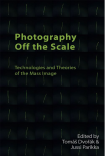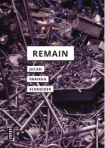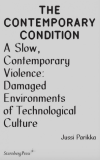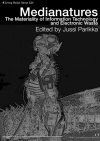Archive
Digital Aesthetics Research Centre
The Digital Aesthetics Research Centre (DARC) is one of the centres in our school and faculty. DARC has been operating about 20 years now with a focus on new and emerging art practices from software and net art to sound, visual, and other media. I am happy to continue and support DARC work as the new director.
The news piece here.
In conversation with Ricky Ruihong Li and Isabelle A. Tan
A new interview has been published in November magazine where we discuss all kinds of topics from the Weather Engines exhibition and the Words of Weather book to (digital) aesthetics, media theory, design and architecture, slow violence, environmental media and more.
Excerpt:
JP
The book grew out of the “Weather Engines” exhibition and a curatorial research project with Daphne Dragona. But, Words of Weather is not a catalog of the exhibition in the conventional sense. It is a glossary in which certain terms for weather entangle with the curatorial premises and strategies unfolding in the gallery space. We did not want it to be a direct document indexing or interpreting the exhibited work. It is not saying and pointing, “this piece here is about weather,” etc. Instead, we wanted it to account for discussions that grew in parallel to what happened in the gallery. It is a document of indirect dialogues, so to speak: a kind of discursive reverberation of the exhibition.
I like to think of this book as a glossary of political ecology. As straightforward as the term “weather” may sound, the glossary acknowledges that in the age of climate change, extreme weather and environmental calamity must be understood within a broader context of what’s been called elemental media and culture. Weather moves between material and political registers, between knowing and experiencing.
IAT
Yes. We love how the book collects and relays terms on the weather. It is (literally) a glossary. At the same time, these terms are not definitions but conversations recorded as short-form essays.
JP
We did not want a book by theorists, with a capital T, but a compendium of different forms of knowledge. We wanted to gather a mix of words generated by theorists and historians as well as by a diverse set of epistemic practices, from artists, architects, writers, filmmakers, and others. The catalog is another reference of the project, a parallel textual space to the otherwise audio-visual exhibition. We insisted that the book carry the project forward, beyond the exhibition in Athens. Without revealing too much, the whole project will have a new edition in 2023 in another country and institution.
[…]
RRL
I imagine this shaped the work you did and how you worked in “Weather Engines.” How might one look at theory as a cultural technique? And does that bring to bear another set of questions?
JP
This was at the center of many discussions I had with Daphne during the curation of the exhibition: how do we talk about the combination of environmental justice and nonhuman agency? How not to lose sight of one or the other? How to curate this into the show in ways that builds many of the issues from ground up, through the works, not merely as theoretical statements. The many axes of the issues are represented by works such as Susan Schuppli’s Cold Cases on the weaponization of temperature in human rights violations across Canada and the US; the powerful film 4 Waters by Denise Ferreira da Silva and Arjuna Neuman; and Felipe Castelblanco’s 2-channel film Upriver on clouds, sovereignty and aerial violence through fumigation for example .
The conference we organized as part of the “Weather Engines” public program continued such questions of environmental violence in concrete and conceptual cases, for example, Nabil Ahmed who has examined the notion of ecocide in his work from writings to the work INTERPRT does.
Read the full interview here.

Felipe Castelblanco, Rio Arriba / Upriver, installation view at Weather Engines, Onassis Stegi, Athens (2021).
Image credits: Stelios Tzetzias
Jussi Parikka…
is a writer and professor in digital aesthetics and culture at Aarhus University. He is also Visiting Professor at FAMU in Prague and University of Southampton. In 2021, he was elected as member of Academia Europeae.

















